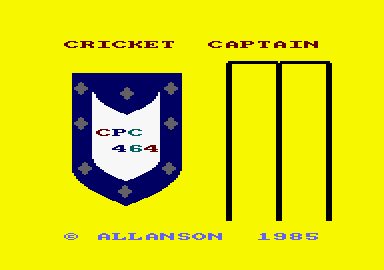This overpriced package will be disappointing to most Amstrad users, who have been weaned on a richer diet. Originally written for another popular micro, this program is a clonebuggy. It has been quickly translated from one machine to another, no advantage has been made of the enhanced graphic and sound capabilities of the Amstrad. Even the text on screen is annoyingly off centre, obviously not written for this particular screen co-ordination. As its name suggests, you are the Captain of a County Cricket team. All 17 County teams are on offer and you may choose to Captain any one of them. A flashing ‘gamble' feature is incorporated, which represents the spin of a coin so that you either bat or bowl first. The batting and bowling order is of your own choosing. You are playing a one day match that lasts for up to twenty overs, but with only three balls per over! Changes in the positions of the fielders is offered — but only briefly — here again that clonebuggy rears its ugly head, the Amstrad whips through the delay loop faster than you can think! Though not having any instructions on the cassette inlay, these are adequately provided on the screen. What is missing from the visual image though, is the second inactive batsman. This makes the all important run out unprovided for, also the one batsman that is visible tends to jump about a bit. Altogether most disconcerting. The idea is good, the implementation is obsolete. D.H., HWC  
| 
